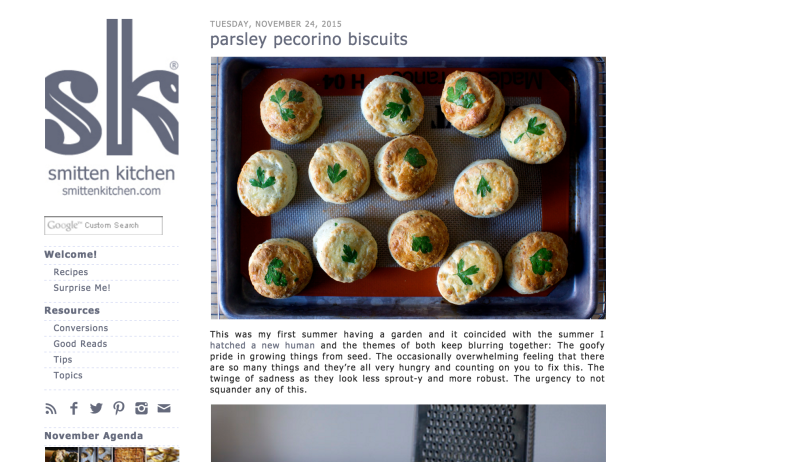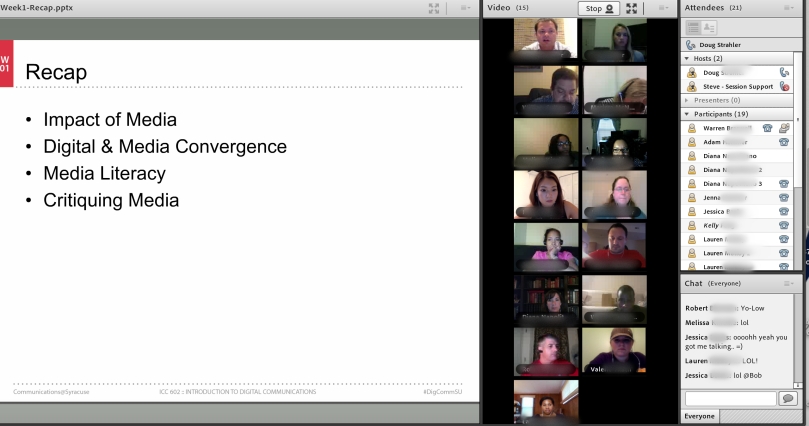I only follow two blogs regularly, which are the Huffington Post blog and the smitten kitchen blog. I enjoy the Huffington Post blog because it covers a whole array of topics ranging from Brad Pitt and Ryan Gosling movies and presidential candidates to Black Friday madness and human rights. The smitten kitchen blog, on the other hand, is devoted entirely to cooking recipes. For the purposes of my digital systems assignment, I’m going to focus on the smitten kitchen blog because it’s the blog that I visit and pay attention to the most.
Here’s a screenshot of the blog and what it looks like when you enter it.

Of course, the title, image and date is constantly changing because the blog is updated regularly, but what I really love about this blog is that it is chock full of sharp, colorful, high-definition images and detailed anecdotes that Deb Perelman, the blogger, includes in each blog post. Perelman focuses on visual content, which really draws me in and makes me stay on the blog. She doesn’t simply insert one image per blog post or recipe, she includes a handful of images that show different phases of the cooking process—the ingredients in a bowl, the final product, etc.
One of the best features of the blog is the easily accessible navigation area located on the left side of the blog that lets me find any recipe based on a specific ingredient I want to use (e.g., apples, beans and legumes, pumpkin, etc.) or a general category of food that I might be craving (e.g., sweets, appetizers, vegetarian, celebration cakes).
The blog is easy to navigate through and easy to read and comprehend, and it allows me to do some extensive searching when I’m on a mission to find the best recipe for dinner, dessert or a potluck.
Last but not least, the blog has a neutral and easy-on-the-eyes color palette of gray and white, that effectively contrasts with the sharp images. The overall look and feel of the blog is minimalistic and simple, which is my absolute favorite site style.
I highly recommend smitten kitchen for anyone looking to try their hand at cooking or to build their repertoire. Perelman does a great job providing easy recipes that don’t require “pretentious ingredients” as she says like truffle oil or a $10 jar of fancy salt.
